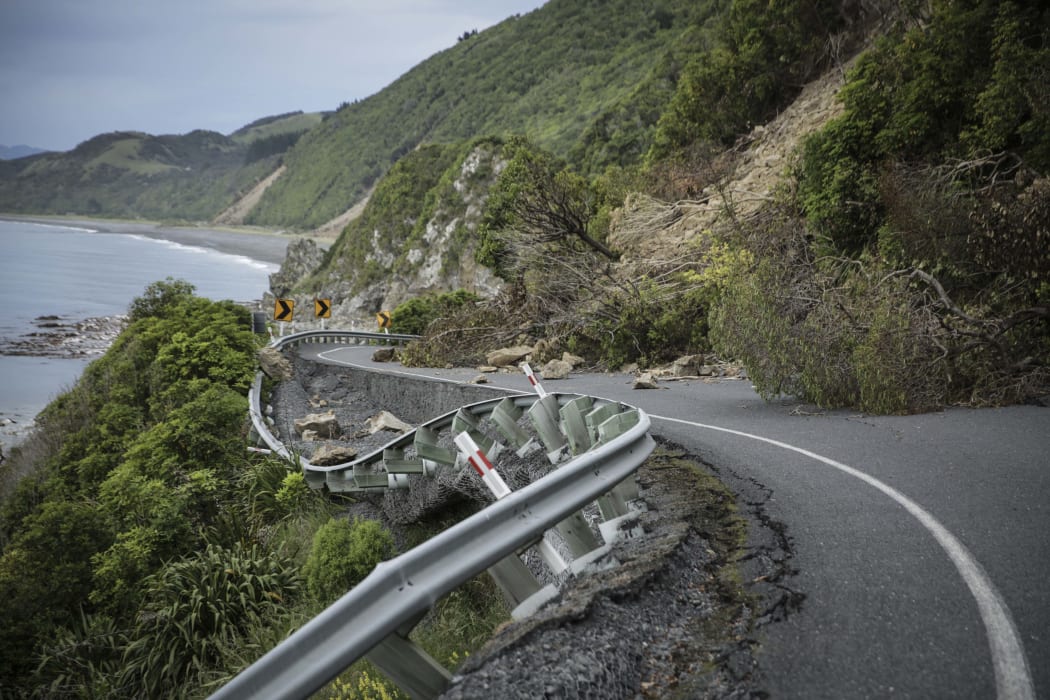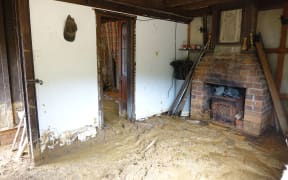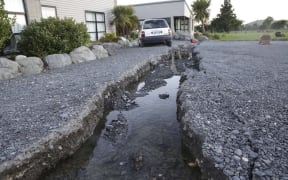The government will have to write a cheque for the next big earthquake as the EQC is cash-strapped after a string of expensive disasters.

The EQC will not be able to cover another big quake, it says. Photo: RNZ / Rebekah Parsons-King
That is because the Earthquake Commission's (EQC) finances had been stretched tight by a series of recent disasters for which it had to pay.
The warning came in the EQC briefing to its incoming minister.
It said such a payment by the state would be the first one ever in EQC history.
"Since the November 2016 Kaikōura Earthquake, modelling of the expected liabilities suggested the Crown Guarantee might be triggered for the first time since EQC was set up in 1945," the briefing said.
The Crown Guarantee is a long standing agreement for the state to come to people's aid if the EQC went broke paying for a large-scale disaster.
Section 16 of the Earthquake Commission Act states the minister must provide a "grant or advance" to meet the commission's liabilities if its assets are lacking.
"We're currently talking about how it is and when it is that we need to ensure that that section of the Act is invoked," Minister responsible for the Earthquake Commission, Megan Woods, said.
"But nothing's changed. The Crown was always going to sit behind with a guarantee on the liabilities."
The EQC briefing said it was working with Treasury to find a method for this payment to be made.
"EQC and Treasury agree there is a benefit in finding a trigger mechanism for calling on the Crown Guarantee ahead of it being required," the briefing said.
The warning of an enforced state bail-out came amid the familiar tale of EQC's economic woes.
This problem is rooted in history.
As part of its mission, the commission had carefully built up a special pot of money since 1945 labelled the National Disaster Fund.
This would pay out for earthquakes and other disasters like landslides and be augmented by regular payments from people's insurance levies.
This fund stood at $6.1 billion at the time of the first Canterbury earthquake.
That quake and the ones that followed cost $11.5 billion, according to the EQC briefing.
The difference was made up from reinsurance and from the continuing inflow of insurance premiums.
But that set back the EQC's ability to save up money for the next big quake.
In the briefing, it said at current rates, it would need at least 30 years to save up $1.75 billion.
In addition, its current reinsurance cover is worth $4.8 billion, which also falls well short of the costs of Canterbury.
The same briefing estimated a magnitude 7.5 quake in Wellington would cost $8 billion.
Asked whether the EQC component of insurance premiums might rise, Ms Woods said she was talking to the EQC about "different ways and different time lengths" it would take to refill its coffers.
She said New Zealanders were reassured to have front line cover from the commission in a disaster.
The figures quoted above only apply to those things the EQC is liable for: chiefly residential homes up to a total value of $100,000.
Residential damage over that level and all commercial damage is payable by the private insurance market.
Premiums for this cover have gone up dramatically and in some cases insurance is hard to get at all.




